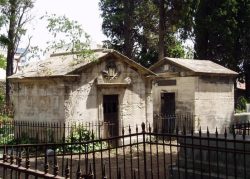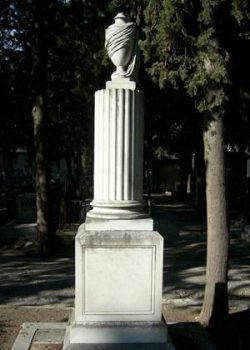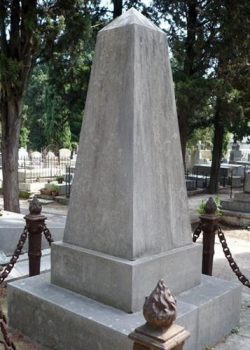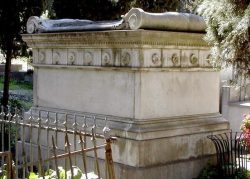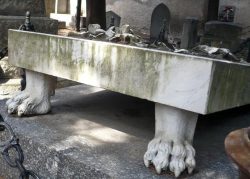Montpellier Protestant cemetery
The Montpellier cemetery is one of the largest cemeteries that has remained private.
A belated achievement
In the 16th century Montpellier, a humanist and Calvinist capital, rediscovered the presence of the Protestants thanks to the French Revolution. The 19th century was marked, there as in some other places, by a revival and redevelopment of Protestantism. A cemetery for non-Catholics was created in 1789 but disappeared during the revolutionary turmoil.
In accordance with the Napoleonic decree on tombs of 23 prairial an XII – 12 June 1804 -, the consistory contemplated ‘giving our brothers a decent place in a cemetery’ and therefore suggested ‘presenting petitions to whoever might be concerned in order to have a place in a cemetery assigned for the Protestants with a wall separating it from the Catholic part to respect religious opinions’.
Eventually an independent cemetery was built in a field purchased by the town council, located in front of the Lattes fountain and bordered by the Aiguerelles stream. The first burial, of a 21 years old woman, took place on 20 November 1809, which makes the bicentennial Protestant cemetery the oldest in the city of Montpellier.
It was soon too small and was enlarged several times up to its present triangular shape, and its three-acre surface.
It was set up outside the city for hygienic reasons, but urban growth progressively caught up with it in the 19th century and surrounded it in the 20th century.
A diversified cemetery
Bordered on both sides by two broad perpendicular alleys, the cemetery comprises a chapel built in 1899, and a military section added in 1890. The military section is enclosed by chains linking six 370 shells. In 1921 was added a war memorial – a portico with columns with sculpted capitals framing five stone slabs featuring the names of 99 soldiers killed in WWI.
The rich monuments featuring famous names show the highly diversified Protestant community in Montpellier. A cosmopolitan trading city with a medical school renowned all over Europe, Montpellier appealed to many foreigners who were often buried in the cemetery, and whose tombs are among the most beautiful and original monuments.
The tombs of Protestant families
The Protestants favoured austerity. Great families had their own family enclosure bounded by grids, thus enclosing a cemetery within the and displaying up to 18 tombs over four generations, a witness to family ties (large families) and social standing (wealthy families).
This austerity does not prevent great architectural and stylistic diversity.
Associated notes
-
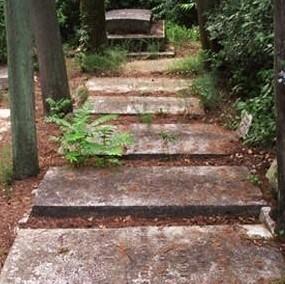
Les tombes protestantes
La Réforme a introduit l’idée que le lieu d’ensevelissement est indifférent. Elle répudie tout culte rendu aux morts. Aucune cérémonie funèbre n’est prévue, le pasteur n’assiste pas à l’ensevelissement. Les... -

Tombes et mausolées particuliers
Certains tombeaux sont remarquables et méritent d’être recensés ici. -

The Protestant cemetery in Mulhouse
The cemetery in Mulhouse houses tombs of important people who contributed to the development and influence of the city. The association ‘Mémoire Mulhousienne’ supervises this heritage. -

Les cimetières familiaux protestants dans le Poitou
Le Poitou, ayant largement adhéré à la Réforme, a connu les épisodes tragiques des guerres de religions. Ses paysages offrent de nombreux témoignages d’une histoire douloureuse, dont les cimetières avec...

